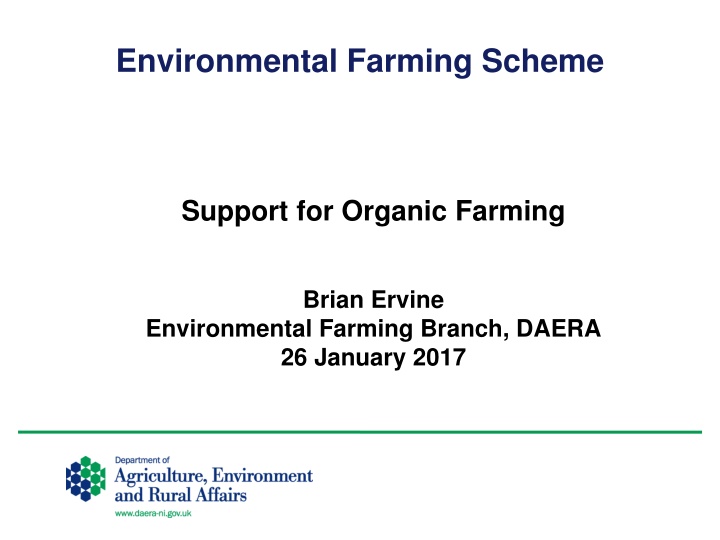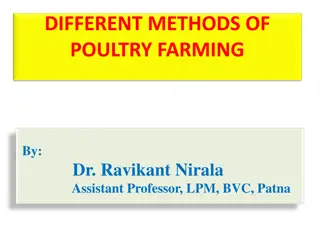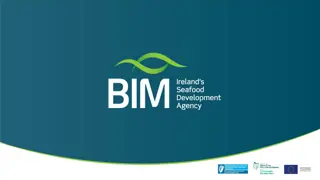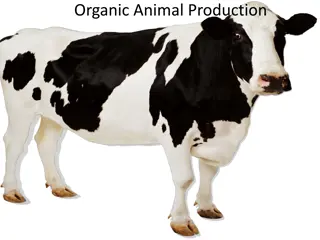Organic Farming Support Program Overview
This overview highlights the Environmental Farming Scheme's support for organic farming, including conversion and management options, eligibility criteria, payment rates, and digressive payments. The scheme aims to increase biodiversity, improve soil quality, enhance water quality, and promote climate stability. Organic farmers can benefit from conversion payments followed by management payments, with specific rates for different land types. Eligible businesses must meet certain criteria and adhere to organic certification regulations. Larger horticulture, arable, and grassland areas qualify for digressive payments.
Download Presentation

Please find below an Image/Link to download the presentation.
The content on the website is provided AS IS for your information and personal use only. It may not be sold, licensed, or shared on other websites without obtaining consent from the author.If you encounter any issues during the download, it is possible that the publisher has removed the file from their server.
You are allowed to download the files provided on this website for personal or commercial use, subject to the condition that they are used lawfully. All files are the property of their respective owners.
The content on the website is provided AS IS for your information and personal use only. It may not be sold, licensed, or shared on other websites without obtaining consent from the author.
E N D
Presentation Transcript
Environmental Farming Scheme Support for Organic Farming Brian Ervine Environmental Farming Branch, DAERA 26 January 2017
Organic Farming Support EFS Two Stand-alone Organic Options Organic Conversion Organic Management
Option Aims Increased biodiversity; Improved soil organic matter and quality; Improved water quality; Climate stability.
Organic Options - Overview Arable land used to grow crops; Horticulture land used for the production of fruit, vegetables, herbs, protected crops, bulbs, outdoor flowers and hardy nursery stock; Grassland Improved grassland containing more than 25% ryegrass, etc or semi-improved grassland containing less than 25% ryegrass, etc; does not include enclosed rough grazing, rough moorland or heather moorland.
Eligibility DAERA Category 1 or 2 Business ID; Minimum of 3 hectares LPIS MEA; Registered with an approved organic certification body on or before the date of application; Have management control of the land for the duration of the agreement
Organic Payments Conversion 2 yrs conversion payment, followed by 3 yrs management payment. For top-fruit conversion is 3yrs, management 2 yrs. Management 5 yrs management payment.
Conversion Payment Rates Option Conversion Payments / Hectare Full Rate Digressive Payment Grassland 144 45 Arable land 149 45 Horticulture 358 149
Management Payment Rates Option Management Payments / Hectare Full Rate Digressive Payment 20 20 53 Grassland Arable land Horticulture 53 53 197
Digressive Payments Conversion and Management Options:- Over 6 hectares for Horticulture; Over 60 hectares for Arable and Grassland;
Selection Procedure / Prioritisation Total farm conversion over partial farm conversion; Larger organic area over smaller organic area; Mixed farms over monocultural farms; Help to achieve sectoral balance across horticultural, livestock and cereal; Farms located within an area of intensive agricultural land use with River bodies failing to meet WFD good status .
Organic Options and other EFS Options Land under EFS(H) options cannot receive organic conversion / management support; EFS(W) funded Margins are not eligible for Organic support; All other EFS boundary options can be claimed on land registered as Organic or in conversion no overlap with agricultural operations compensated by the Organic payment; Woodland Options cannot be claimed on land registered as Organic / in conversion.
Organic Conversion Target By 2020 - support conversion of at least 700ha of conventionally farmed land to certified organic production.























